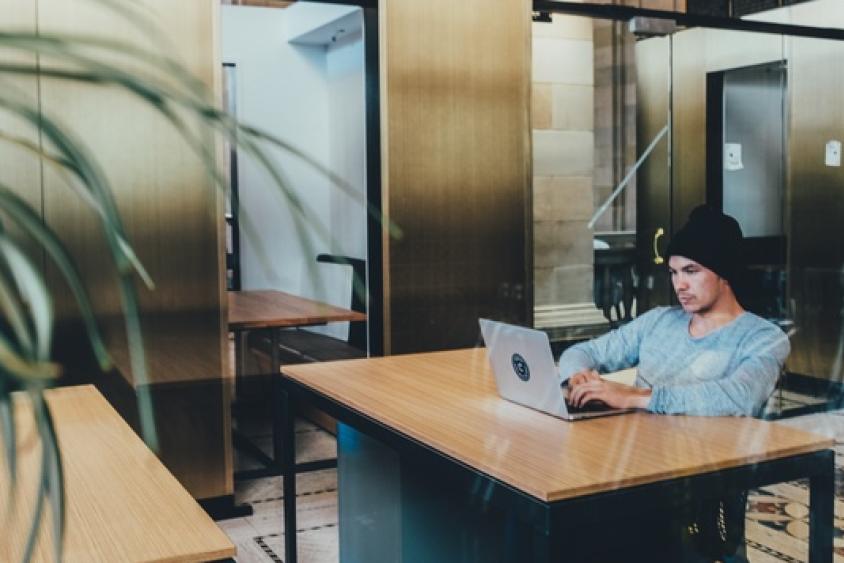Emphasize the Employee Experience

In human-centered design, the user experience is everything.
It’s clear when companies have taken great care to design their products and services specifically to create as delightful an experience as possible. For instance: An iPhone is more than a beautifully designed object. It is also the pleasure you get from taking photographs of your friends and family, listening to your favorite music, and even simply taking the device out of the box for the first time.
Each of these steps has been designed down to the smallest detail. Similarly, the experience of eating at a restaurant is much more than the taste of the food. It’s the lighting, the art on the walls, the quality of service, the wait time – even the experience of parking your car.
Businesses, wisely, have begun to think about their work environments in the same way. While some workplaces still resemble the drab cubicle farms of “Office Space,” many other companies have followed the lead of large tech companies, which offer casual common areas filled with snacks and activities that spur off-the-cuff collaboration. These employers recognize that an employee’s emotional experience can be every bit as important as their functional needs. To achieve this, the user, or employee, should be included in the re-design process.
Asking the Right Questions
Now, a Silicon Valley-style approach might not be right for every business. A company very well might find that attractive childcare options are more important to their workers than ping pong rooms, or that employees are happier and more productive in enclosed offices than with an open floor plan. And too often, design decisions are driven by style rather than substance. The key to getting workplace design right is to talk to employees in order to identify the sorts of experiences that employees want and need, and then design a workplace that provides those experiences.

Some of the most important questions for companies to answer in the near future will be around who should come into the office and when. Some businesses might choose to move some employees to permanent remote roles, while others will likely embrace hybrid or flexible models, with workers coming into the office one or several days per week. Just think of the benefits: greenhouse gas emissions will go down, workers will have more opportunities to watch their children grow up, and businesses will continue to see high levels of productivity without requiring employees to adopt a “live to work” mindset.
Companies also need to consider how they will set their remote employees up for success. While many workers have made do over the past year with laptops and cloud collaboration tools, employees may expect their companies to provide them with more robust home office solutions going forward.
Team building activities, either in-person or virtual, must be incorporated to help compensate for the sense of togetherness that is lost when employees spend a large portion of their time working from home. Businesses may find that relatively inexpensive touches – such as providing meal delivery to workers’ homes, or periodically sending small gifts like water bottles or flannel blankets – can have an outsized impact on the employee experience.
We have a huge opportunity right now to re-imagine how we experience work, let’s reach for something beautiful.
Read more at the source: Innovation & Tech Today


